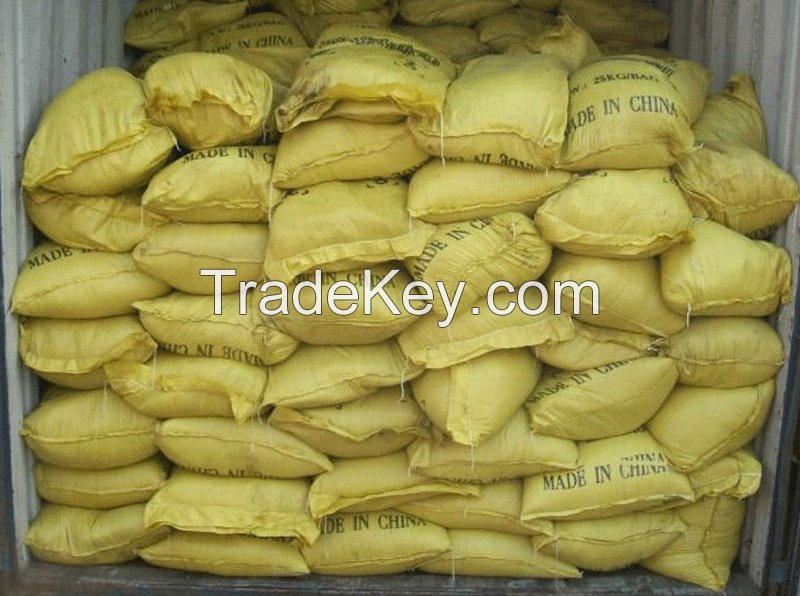

离岸价格
Get Latest Price|
1 Minimum Order
国:
China
モデル番号:
-
离岸价格:
ロケーション:
-
最低注文量の価格:
-
最低注文量:
1
パッケージの詳細:
25kg
納期:
15 to 20 days
供給能力:
500000 Ton per Year
支払いタイプ:
-
製品グループ :
China
連絡先担当者 Mr. chen
Chaozhou, Guangdong
Lignosulfonates, or sulfonated lignin, (CAS number ********5) are
water-soluble anionic polyelectrolyte polymers: they are byproducts
from the production of wood pulp using sulfite pulping.[1]
Most delignification in sulfite pulping involves acidic cleavage of
ether bonds, which connect many of the constituents of lignin.[2]
The electrophilic carbocations produced during ether cleavage react
with bisulfite ions (HSO3−) to give sulfonates.
R-O-R' + H+ → R+ + R'OH
R+ + HSO3− → R-SO3H
The primary site for ether cleavage is the α-carbon (carbon atom
attached to the aromatic ring) of the propyl (linear three carbon)
side chain. The following structures do not specify the structure
since lignin and its derivatives are complex mixtures: the purpose
is to give a general idea of the structure of lignosulfonates. The
groups R1 and R2 can be a wide variety of groups found in the
structure of lignin. Sulfonation occurs on the side chains, not on
the aromatic rings, like in p-toluenesulfonic acid.
Generalized structure of lignosulfonates
Lignosulfonate have very broad ranges of molecular mass (they are
very polydisperse). A range of from ******0,**0 da has been
reported for softwood lignosulfonates with lower values reported
for hardwoods.[1]
Preparation[edit]
Lignosulfonates are recovered from the spent pulping liquids (red
or brown liquor) from sulfite pulping. The most widely used
industrial process is the Howard process, in which ***5% yields of
calcium lignosulfonates (CAS number *******3), are precipitated by
addition of excess calcium hydroxide. Ultrafiltration and
ion-exchange can also be used to separate lignosulfonates from the
spent pulping liquid.[1] A list of CAS numbers for the various
metal salts of lignosulfonate is available.[3]
Uses[edit]
Lignosulfonates have a wide variety of applications.[4]
The single largest use for lignosulfonates is as plasticizers in
making concrete,[1] where they allow concrete to be made with less
water (giving stronger concrete) while maintaining the ability of
the concrete to flow. Lignosulfonates are also used during the
production of cement, where they act as grinding aids in the cement
mill and as a rawmix slurry deflocculant (that reduces the
viscosity of the slurry).
Lignosulfonates are also used for the production of plasterboard to
reduce the amount of water required to make the stucco flow and
form the layer between two sheets of paper. The reduction in water
content allows lower kiln temperatures to dry the plasterboard,
saving energy.
The ability of lignosulfonates to reduce the viscosity of mineral
slurries is used to advantage in oil drilling mud, where it
replaced tannic acids from quebracho (a tropical tree).
Lignosulfonates are used to disperse pesticides, dyes,[5] carbon
black,[6] and other insoluble solids and liquids into water. They
are used in tanning leather. They are also used to suppress dust on
unpaved roads.[7]
Oxidation of lignosulfonates from softwood trees produced vanillin
(artificial vanilla flavor).[8]
Dimethyl sulfide and dimethyl sulfoxide (an important organic
solvent) are produced from lignosulfonates. The first step involves
heating lignosulfonates with sulfides or elemental sulfur to
produce dimethyl sulfide. The methyl groups come from methyl ethers
present in the lignin. Oxidation of dimethyl sulfide with nitrogen
dioxide produces dimethyl sulfoxide (DMSO). [1]
Also one of the very wide uses of lignosulfonates is deflocculation
of clays used in drilling fluids in the oil and gas industry.
Aqueous Lignosulfonate solutions are also widely used as a
non-toxic dust suppression agent for unpaved road surfaces, where
it is popularly, if erroneously, called "tree sap". Roads treated
with lignosulfonates can be distinguished from those treated with
calcium chloride by color, lignosulfonates give the surface a dark
grey color, while calcium chloride is a distinctive tan/brown. As
lignosulfonates do not rely on water to provide their binding
properties, they tend to be more useful in arid locations.
| 国: | China |
| モデル番号: | - |
| 离岸价格: | Get Latest Price |
| ロケーション: | - |
| 最低注文量の価格: | - |
| 最低注文量: | 1 |
| パッケージの詳細: | 25kg |
| 納期: | 15 to 20 days |
| 供給能力: | 500000 Ton per Year |
| 支払いタイプ: | - |
| 製品グループ : | concrete admixture |